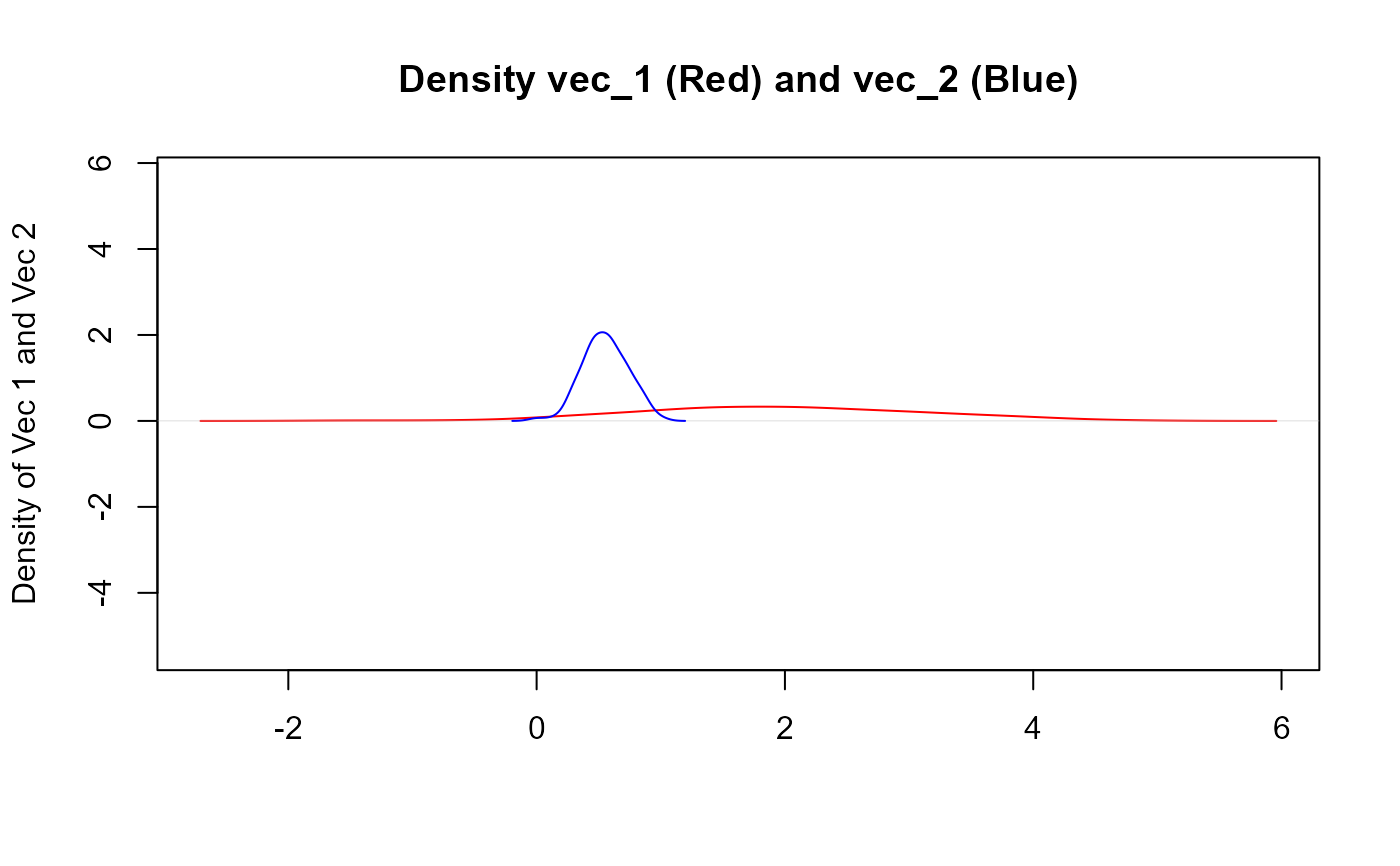Takes a numeric vector and will return a vector that has been scaled from [0,1]
Details
Takes a numeric vector and will return a vector that has been scaled from [0,1]
The input vector must be numeric. The computation is fairly straightforward.
This may be helpful when trying to compare the distributions of data where a
distribution like beta from the fitdistrplus package which requires data to be
between 0 and 1
$$y[h] = (x - min(x))/(max(x) - min(x))$$
This function can be used on it's own. It is also the basis for the function
hai_scale_zero_one_augment().
See also
Other Vector Function:
hai_fourier_discrete_vec(),
hai_fourier_vec(),
hai_hyperbolic_vec(),
hai_kurtosis_vec(),
hai_scale_zscore_vec(),
hai_skewness_vec(),
hai_winsorized_move_vec(),
hai_winsorized_truncate_vec()
Other Scale:
hai_scale_zero_one_augment(),
hai_scale_zscore_augment(),
hai_scale_zscore_vec(),
step_hai_scale_zscore()
Examples
vec_1 <- rnorm(100, 2, 1)
vec_2 <- hai_scale_zero_one_vec(vec_1)
dens_1 <- density(vec_1)
dens_2 <- density(vec_2)
max_x <- max(dens_1$x, dens_2$x)
max_y <- max(dens_1$y, dens_2$y)
plot(dens_1,
asp = max_y / max_x, main = "Density vec_1 (Red) and vec_2 (Blue)",
col = "red", xlab = "", ylab = "Density of Vec 1 and Vec 2"
)
lines(dens_2, col = "blue")

